Perineal techniques during the second stage of labour for reducing perineal trauma and postpartum complications
- PMID: 39465967
- PMCID: PMC11514540
- DOI: 10.1002/14651858.CD016148
Perineal techniques during the second stage of labour for reducing perineal trauma and postpartum complications
Abstract
Rationale: Postpartum haemorrhage (PPH) is responsible for around 27% of global maternal deaths. Perineal tears are common in vaginal births and a significant contributor to excessive blood loss. A diversity of perineal techniques are utilised to prevent perineal trauma and reduce the incidence of PPH; however, they lack evidence-based comparisons to understand their effects.
Objectives: To assess the effect of perineal techniques during the second stage of labour on the incidence of and morbidity associated with perineal trauma to prevent postpartum complications.
Search methods: We searched four databases and two trial registers up to 16 April 2024. We checked references, searched citations and contacted study authors to identify additional studies.
Eligibility criteria: We included randomised controlled trials (RCTs) of women in the second stage of labour who intended to give birth vaginally, comparing any perineal techniques with control or another perineal technique. We excluded studies that performed perineal techniques outside the second stage of labour.
Outcomes: Our critical outcomes were second-, third- and fourth-degree tears measured immediately after birth, and PPH ≥ 500 mL measured within 24 hours after birth.
Risk of bias: We used the Cochrane risk of bias 2 tool to assess bias in the included RCTs.
Synthesis methods: We synthesised results for each outcome within each comparison using meta-analysis where possible. Where this was not possible due to the nature of the data, we synthesised results narratively. We used GRADE to assess the certainty of evidence for each outcome.
Included studies: We included a total of 17 studies with 13,695 participants.
Synthesis of results: Hands off (or poised) versus hands on Hands off (poised) may result in little to no difference in second-degree tears (risk ratio (RR) 0.73, 95% confidence interval (CI) 0.32 to 1.64; 2 studies; low-certainty evidence) and third- or fourth-degree tears when data are combined (RR 1.27, 95% CI 0.81 to 1.99; 2 studies; low-certainty evidence). The evidence is very uncertain about the effect of hands off (poised) on third-degree tears and fourth-degree tears when reported separately (RR 0.50, 95% CI 0.05 to 5.27; 1 study; very low-certainty evidence and RR 3.00, 95% CI 0.13 to 71.22; 1 study; very low-certainty evidence). Hands off (poised) may result in little to no difference in PPH ≥ 500 mL (RR 1.16, 95% CI 0.92 to 1.47; 1 study; low-certainty evidence). Hands off (poised) probably results in little to no difference in breastfeeding two days after birth (RR 1.02, 95% CI 0.99 to 1.06; 1 study; moderate-certainty evidence) and perineal pain (RR 0.98, 95% CI 0.94 to 1.01; 1 study; moderate-certainty evidence). Vocalisation versus control Vocalisation may result in a reduction in second-degree tears (RR 0.56, 95% CI 0.23 to 1.38; 1 study; low-certainty evidence) and third-degree tears (RR 0.13, 95% CI 0.01 to 2.32; 1 study; low-certainty evidence), but the CIs are wide and include the possibility of no effect. No events were reported for fourth-degree tears (low-certainty evidence). Vocalisation may increase maternal satisfaction (RR 1.19, 95% CI 0.93 to 1.51; 1 study; low-certainty evidence). The evidence is very uncertain about the effect of vocalisation on perineal pain (RR 1.44, 95% CI 0.81 to 2.58; 1 study; very low-certainty evidence). Warm compress on the perineum versus control (hands off or no warm compress) Warm compress on the perineum may result in little to no difference in second-degree tears (RR 0.94, 95% CI 0.72 to 1.21; 2 studies; low-certainty evidence), but likely results in a reduction in third- or fourth-degree tears (RR 0.46, 95% CI 0.27 to 0.79; 3 studies; moderate-certainty evidence). Evidence from two smaller studies is very uncertain about the effect of warm compress on the perineum on third-degree tears (RR 0.51, 95% CI 0.04 to 7.05; 2 studies; very low-certainty evidence) or fourth-degree tears (RR 0.11, 95% CI 0.01 to 2.06; 2 studies; very low-certainty evidence) when reported separately. Warm compress likely results in a large reduction in perineal pain (mean difference (MD) -0.81, 95% CI -1.18 to -0.44; 1 study; moderate-certainty evidence). The evidence is very uncertain about the effect of warm compress on the perineum on maternal satisfaction and PPH ≥ 500 mL. Massage of the perineum versus control (hands off or no usual care) Massage of the perineum may have little to no effect on second-degree tears (RR 1.04, 95% CI 0.89 to 1.21; 4 studies; low-certainty evidence). The evidence is very uncertain about the effect of massage of the perineum on third-degree tears (RR 0.57, 95% CI 0.16 to 2.02; 4 studies; very low-certainty evidence). Massage of the perineum may reduce fourth-degree tears but the CIs are wide and include the possibility of no effect (RR 0.26, 95% CI 0.04 to 1.61; 4 studies; low-certainty evidence). The evidence suggests that massage likely results in little to no difference in perineal pain (RR 0.97, 95% CI 0.90, 1.05; 1 study; moderate-certainty evidence). One study reported 10 participants with postpartum haemorrhage across three interventions (warm compress, massage, control). Combined warm compress and massage of the perineum versus control Combined warm compress and massage of the perineum likely results in a reduction in second-degree tears when compared to a control (RR 0.63, 95% CI 0.46 to 0.86; 1 study; moderate-certainty evidence), but the evidence is very uncertain about the effect on third-degree tears (RR 2.92, 95% CI 0.12 to 70.72; 1 study; very low-certainty evidence). The intervention may result in a reduction in PPH ≥ 500 mL but the CIs are wide and include the possibility of no effect (RR 0.43, 95% CI 0.14 to 1.35; 1 study; low-certainty evidence). Combined warm compress and massage likely results in an increase in maternal satisfaction (MD 0.4, 95% CI -0.01 to 0.81; 1 study; moderate-certainty evidence). Combined warm compress and massage of the perineum versus massage alone Combined warm compress and massage of the perineum may result in little to no difference in second-degree tears (RR 0.95, 95% CI 0.86 to 1.06; 1 study; low-certainty evidence) when compared to massage alone, but the evidence is very uncertain about the effect on third- or fourth-degree tears (RR 0.98, 95% CI 0.06 to 15.49; 1 study; very low-certainty evidence). It may also result in little to no difference in PPH ≥ 500 mL (RR 1.10, 95% CI 0.59 to 2.07; 1 study; low-certainty evidence). The evidence suggests that combined warm compress and massage may result in little to no difference in maternal satisfaction (1 study; low-certainty evidence). Other perineal techniques We also assessed evidence on the following comparisons, but since they are used less frequently in global clinical practice to optimise birth outcomes, we have not presented the results summary here: Ritgen's manoeuvre versus standard care; primary delivery of posterior versus anterior shoulder; massage with enriched oil on the perineum versus massage with liquid wax; petroleum jelly on the perineum versus control; and perineal protection device versus control.
Authors' conclusions: Overall, the evidence for the effectiveness of perineal techniques to reduce perineal trauma and postpartum haemorrhage is very uncertain. Very few studies reported rates of postpartum haemorrhage, adverse events, women's or health workers' experience or other important outcomes that allow us to understand the effectiveness and acceptability of perineal techniques to reduce perineal trauma. Prior to any further large trials, research is needed to clarify the types of interventions, including a clear description of the process of development and involvement of relevant stakeholders. There is a need to clarify how the intervention is proposed to achieve its effects. Trials would benefit from process evaluation alongside, to explore context, mechanisms and effects.
Funding: This Cochrane review was funded (in part) by WHO (APW 2024/1475460). TF, VL and the CIDG editorial base are funded by UK aid from the UK government for the benefit of low- and middle-income countries (project number 300342-104). The views expressed do not necessarily reflect the UK government's official policies.
Registration: Registration and protocol: PROSPERO, CRD42024537252. Available from: https://www.crd.york.ac.uk/prospero/display_record.php?ID=CRD42024537252.
Copyright © 2024 The Authors. Cochrane Database of Systematic Reviews published by John Wiley & Sons, Ltd. on behalf of The Cochrane Collaboration.
Conflict of interest statement
KD has no known conflicts of interest. KD is a Senior Lecturer at the Liverpool School of Tropical Medicine and based at the Cochrane Infectious Diseases Group (CIDG) editorial base, but not a CIDG staff member. KD was not involved in the editorial process.
TF is a CIDG staff member and has no known conflicts of interest. TF was not involved in the editorial process.
VL is a CIDG Information Specialist and has no known conflicts of interest. VL was not involved in the editorial process.
TAM has no known conflicts of interest.
TL is on a Scientific Research Panel for the Lunaler Group.
Figures

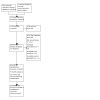
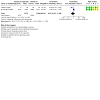


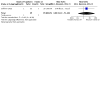

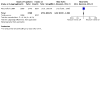

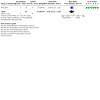

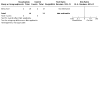
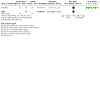

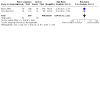
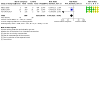
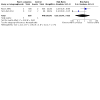
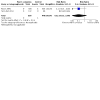
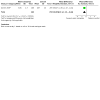

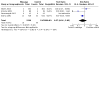
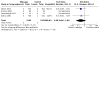
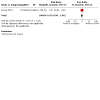
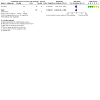
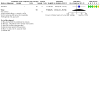
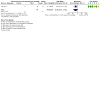

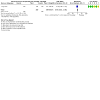
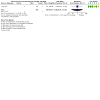
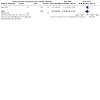
References
-
- Souza JP, Gülmezoglu AM, Vogel J, Carroli G, Lumbiganon P, Qureshi Z, et al. Moving beyond essential interventions for reduction of maternal mortality (the WHO Multicountry Survey on Maternal and Newborn Health): a cross-sectional study. Lancet 2013;381(9879):1747-55. [DOI: 10.1016/S0140-6736(13)60686-8] - DOI - PubMed
-
- United Nations. Sustainable Development Goals (SDGs). sdgs.un.org/goals (accessed 01 June 2024).
Publication types
MeSH terms
LinkOut - more resources
Full Text Sources
Research Materials
Miscellaneous

